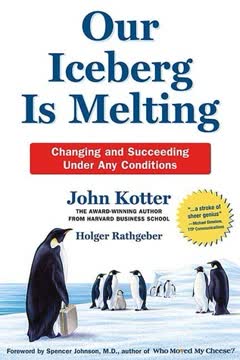Key Takeaways
1. Risk management is broken and needs fixing
The biggest risks tend to be those things that are more rare but potentially disastrous—perhaps even events that have not yet occurred in this organization.
Current state of risk management. Many organizations rely on ineffective methods for assessing and managing risks. These methods often fail to identify or properly evaluate the most significant threats. Risk management practices frequently focus on routine, easily quantifiable risks while overlooking rare but potentially catastrophic events.
Need for improvement. Effective risk management requires:
- A comprehensive approach that considers all potential risks
- Quantitative methods to accurately assess probabilities and impacts
- Regular evaluation and updating of risk assessments
- Integration of risk management into overall decision-making processes
2. Popular risk assessment methods are often worse than useless
Risk matrices can mistakenly assign higher qualitative ratings to quantitatively smaller risks. For risks with negatively correlated frequencies and severities, they can be "worse than useless," leading to worse-than-random decisions.
Problems with qualitative methods. Many organizations use risk matrices or other qualitative scoring systems to assess risks. These methods have several critical flaws:
- Ambiguity in definitions of likelihood and impact categories
- Inability to accurately compare or prioritize risks
- Tendency to oversimplify complex risk scenarios
- Failure to account for correlations between risks
Consequences of poor methods. Using flawed risk assessment techniques can lead to:
- Misallocation of resources for risk mitigation
- False sense of security about major risks
- Overlooking potentially catastrophic events
- Poor decision-making based on inaccurate risk information
3. Quantitative methods are essential for effective risk management
The most important questions of life are, for the most part, really only problems of probability.
Benefits of quantitative approaches. Quantitative risk assessment methods offer several advantages:
- Precise measurement of probabilities and potential impacts
- Ability to compare and prioritize diverse risks
- Integration of historical data and expert judgment
- Support for data-driven decision-making
Key quantitative tools:
- Probability distributions to model uncertainty
- Monte Carlo simulations for complex scenarios
- Bayesian methods to update probabilities with new information
- Value at Risk (VaR) and other financial risk metrics
4. Expert judgments need calibration and consistent evaluation
True experts, it is said, know when they don't know. However, nonexperts (whether or not they think they are) certainly do not know when they don't know.
Challenges with expert judgment. Relying on expert opinions for risk assessment can be problematic due to:
- Overconfidence in estimates
- Inconsistency in judgments
- Cognitive biases affecting risk perception
- Difficulty in combining opinions from multiple experts
Improving expert input:
- Calibration training to improve probability assessments
- Structured elicitation techniques to reduce bias
- Performance-weighted aggregation of multiple expert opinions
- Regular feedback and evaluation of expert judgments against actual outcomes
5. Bayesian methods and empirical testing improve risk models
Bayes' theorem is a simple but powerful mathematical tool and should be a basic tool for risk analysts to evaluate such situations.
Power of Bayesian analysis. Bayesian methods offer a robust framework for updating risk assessments as new information becomes available. Key advantages include:
- Incorporation of prior knowledge and new data
- Ability to handle small sample sizes and rare events
- Continuous improvement of risk estimates over time
Importance of empirical testing. Risk models should be regularly validated against real-world outcomes:
- Backtesting models against historical data
- Tracking model predictions and comparing to actual results
- Adjusting models based on observed performance
- Using meta-analysis to improve overall risk assessment practices
6. Monte Carlo simulations are powerful tools for risk analysis
Monte Carlo is by far the most powerful method to compute value at risk.
Advantages of Monte Carlo simulations:
- Ability to model complex systems with multiple uncertainties
- Generation of probability distributions for potential outcomes
- Flexibility to incorporate various types of risk factors
- Support for scenario analysis and stress testing
Implementing Monte Carlo methods:
- Identify key risk variables and their probability distributions
- Define relationships and correlations between variables
- Run thousands of random simulations to generate outcomes
- Analyze results to understand risk profiles and potential impacts
7. Organizational culture and incentives are crucial for risk management success
The biggest improvement I've seen in my thirty years is the peer review. Everything goes through this rigorous filter before it goes to management for decision-making.
Creating a risk-aware culture. Effective risk management requires organizational commitment:
- Leadership support for rigorous risk assessment
- Integration of risk considerations into all decision-making processes
- Encouraging open communication about potential risks
- Fostering a culture of continuous learning and improvement
Aligning incentives with good risk management:
- Rewarding accurate risk assessments rather than optimistic projections
- Incorporating risk management performance into employee evaluations
- Providing resources and training for improved risk analysis
- Establishing clear accountability for risk-related decisions and outcomes
</reponse>
Last updated:
FAQ
What's The Failure of Risk Management about?
- Critique of Current Practices: The book critiques traditional risk management methods, particularly qualitative ones, arguing they often lead to poor decision-making.
- Call for Quantitative Methods: Douglas W. Hubbard advocates for a more scientific and quantitative approach to risk management, emphasizing statistical methods like Monte Carlo simulations.
- Structured Analysis: It is divided into three parts: identifying the crisis in risk management, analyzing why current methods are flawed, and offering practical solutions.
Why should I read The Failure of Risk Management?
- Critical Insights: Hubbard provides a thorough examination of the flaws in popular risk management methods, essential for professionals in the field.
- Practical Solutions: The book offers actionable advice and methodologies to improve risk assessment and management practices.
- Broad Applicability: It is relevant for various industries, including finance, engineering, and project management, making it a valuable resource for a wide audience.
What are the key takeaways of The Failure of Risk Management?
- Ineffectiveness of Qualitative Methods: Hubbard argues that qualitative scoring methods, such as risk matrices, often add error and do not improve decision-making.
- Need for Quantitative Analysis: The book advocates for using quantitative methods to better assess risks and make informed decisions.
- Calibration of Expert Judgment: It emphasizes the importance of calibrating expert estimates to improve accuracy in risk assessments.
What are the best quotes from The Failure of Risk Management and what do they mean?
- “First, do no harm.”: This principle should guide risk management practices, ensuring that methods do not introduce additional errors or worsen decision-making.
- “Never attribute to malice that which can be adequately explained by stupidity.”: This highlights the importance of understanding systemic issues rather than blaming individuals for failures.
- “Experience is inevitable. Learning is not.”: This underscores the need for organizations to actively learn from past experiences rather than relying solely on historical knowledge.
What are the “Four Horsemen” of risk management mentioned in The Failure of Risk Management?
- Actuaries: They use scientific and mathematical methods primarily in insurance and pensions, but their influence is limited outside these areas.
- War Quants: Engineers and scientists who apply probabilistic risk analysis and decision analysis, often using simulations to model risks.
- Economists: Financial analysts who focus on statistical analysis of historical data, but may overlook systemic risks and interactions.
- Management Consultants: They often promote qualitative methods that lack empirical support, leading to widespread adoption of ineffective practices.
How does Douglas W. Hubbard define risk in The Failure of Risk Management?
- Long Definition: Risk is described as “a potential loss, disaster, or other undesirable event measured with probabilities assigned to losses of various magnitudes.”
- Short Definition: It is simply “the possibility that something bad could happen.”
- Emphasis on Measurement: Hubbard stresses that risk should be quantifiable, allowing for better decision-making and management.
What is the significance of calibration in risk management according to The Failure of Risk Management?
- Improving Accuracy: Calibration helps experts provide more accurate probability estimates, reducing overconfidence and inconsistency in risk assessments.
- Training Methods: Hubbard discusses techniques for training experts to improve their judgment, which can lead to better decision-making outcomes.
- Empirical Evidence: The book presents research showing that calibrated experts perform significantly better than uncalibrated ones, making calibration a critical component of effective risk management.
What are the problems with popular risk assessment methods discussed in The Failure of Risk Management?
- Qualitative Scoring Issues: Methods like risk matrices often rely on arbitrary scales that compress a wide range of values into limited categories, leading to imprecision.
- Subjective Errors: These methods do not account for known biases and errors in human judgment, which can result in systematic underestimation of risks.
- Lack of Empirical Support: Many popular methods lack scientific validation, making them unreliable for making significant decisions.
How does Douglas W. Hubbard propose to fix the issues in risk management?
- Adopt Quantitative Methods: He advocates for the use of quantitative analysis, such as Monte Carlo simulations, to better assess risks and inform decisions.
- Improve Expert Input: The book suggests methods for calibrating expert judgments and using empirical data to enhance risk assessments.
- Establish Clear Risk Tolerance: Hubbard emphasizes the need for organizations to define their risk tolerance quantitatively, allowing for better resource allocation in risk mitigation.
What is the “one-for-one substitution model” introduced in The Failure of Risk Management?
- Simple Quantitative Model: This model replaces qualitative risk matrices with a straightforward quantitative approach that uses explicit probabilities for likelihood and impact.
- Expert Input: Experts provide subjective estimates of probabilities and potential losses, which are then used in a Monte Carlo simulation to generate a loss exceedance curve.
- Decision Support: The model aims to support decision-making by allowing organizations to visualize risks and compare them against their risk tolerance.
What are the limitations of expert knowledge in risk management according to The Failure of Risk Management?
- Overconfidence: Experts often overestimate their accuracy in predicting outcomes, leading to systematic errors in risk assessments.
- Inconsistency: Experts may provide different estimates for the same risk at different times, indicating a lack of reliability in their judgments.
- Need for Calibration: The book stresses the importance of calibrating expert estimates to improve their accuracy and reduce the impact of biases on decision-making.
How does The Failure of Risk Management address the concept of "calibration"?
- Calibration Importance: Calibration is presented as a critical component of effective risk analysis. Hubbard explains that calibrated estimates lead to more accurate assessments of uncertainty and risk.
- Methods for Calibration: The book outlines various methods for calibrating expert estimates, including the use of equivalent bets and structured reflection on potential errors.
- Impact on Decision-Making: Improved calibration can significantly enhance the quality of risk assessments, leading to better-informed decisions. Hubbard emphasizes that organizations should prioritize calibration training for their experts.
Review Summary
The Failure of Risk Management receives mixed reviews, with many praising its critique of traditional risk management methods and advocacy for quantitative approaches. Readers appreciate Hubbard's insights on the limitations of qualitative risk assessments and his push for more rigorous, data-driven methods. However, some find the book repetitive and overly critical of other approaches. Critics note that while Hubbard effectively highlights problems in risk management, he provides limited practical solutions. Overall, the book is seen as thought-provoking for professionals in risk management and decision-making roles.
Similar Books










Download PDF
Download EPUB
.epub digital book format is ideal for reading ebooks on phones, tablets, and e-readers.







